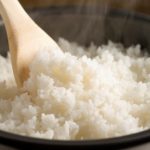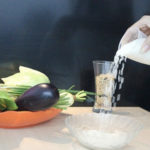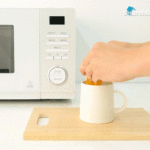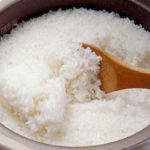1. Benefits of the circles on the rice paddle
If you pay attention, you have probably noticed the small holes on the handle of the rice paddle or the tiny dots on the surface of the paddle. These seemingly unimportant details actually have their own benefits.
Benefits of the circles on the rice paddle
Many people think that the circles on the paddle help prevent the rice from sticking, but that is not true.
If you cook rice often, you will notice that even if the paddle is coated with a non-stick layer, the rice grains still stick to the sides of the rice cooker. This is especially true when cooking sticky or overnight rice.
If the rice becomes sticky or the non-stick coating on the pot is gone, the rice grains will stick to the pot after the rice cools down. In this case, to clean the pot, you will have to soak it in water, wait for the rice grains to soften, and then scrub it. But if you use a soft cloth to scrub the pot, the rice grains will stick to the cloth and be harder to clean, while using a steel brush will damage the non-stick layer of the pot.
At this point, the true function of the circles on the rice paddle will come into play. Just wait until the rice softens, then use the surface with the circles on the paddle to gently scrub the rice grains stuck on the sides of the pot. These circles are harder than a soft cloth, but not as sharp as a steel brush, so they will not damage the pot. Just gently scrub around, the stuck rice will come off easily. Finally, use a soft cloth to clean the rice cooker.
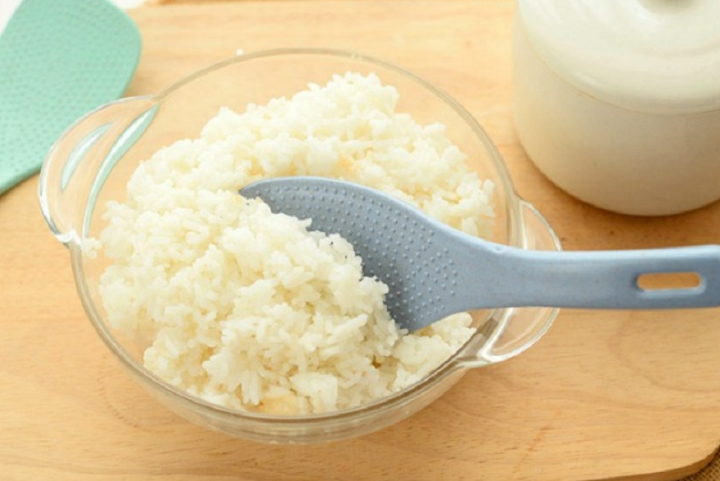
Benefits of the circles on the rice paddle.
Benefits of the hole in the handle of the rice paddle
Rice paddles are often designed with a hole in the handle. You can use this design to hang the paddle. However, their true function is to measure the amount of water when cooking rice.
If you compare different rice paddles, you will notice that the holes are designed to be similar. So instead of using your fingers to measure the amount of water, you can simply use the handle of the rice paddle and insert it straight into the pot after rinsing the rice. The water level should touch the hole, which is the most accurate amount of water for cooking rice. This ensures that the cooked rice has the right texture, neither too dry nor too sticky.
Common cooking mistakes that make rice less delicious
Over-rinsing the rice
Vitamin B1 is mainly found on the outer layer of rice grains. If you rinse the rice too thoroughly when cooking rice, you will lose the nutrients. You should only rinse the rice with water 1-2 times to remove dirt. Many people tend to rinse the rice with water 4-5 times until the water becomes completely clear, but that is a mistake to avoid.
Pouring too little or too much water
Incorrect water measurement can result in rice that is too mushy, dry, or unevenly cooked. Pouring the right amount of water to achieve the perfect texture is not something everyone can do. Each type of rice requires a specific amount of water. Therefore, when you buy rice, you should cook a test batch. With 500g of rice, pour 600ml of water, then adjust as needed.
Opening the lid too frequently
Opening the lid multiple times during cooking can reduce the temperature and lose the necessary steam for cooking the rice. Only open the lid when necessary or when the rice is fully cooked.
Source: VTC.vn
“How to Revive Hard, Sticky, and Dry Rice: Tips and Tricks”
If you’ve ever cooked rice and ended up with unsatisfying results, fear not – there are ways to salvage the meal. Whether you’ve accidentally put too much water in resulting in a mushy mess, or didn’t measure enough while switching to a different variety of rice and got hard grains, we’ve got some helpful tips to get the perfect rice.

























